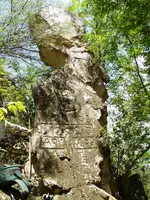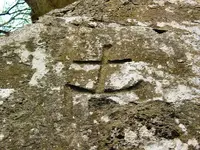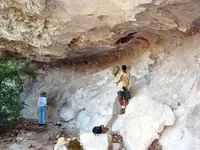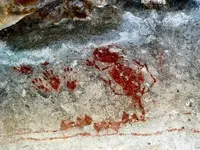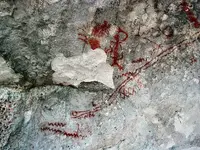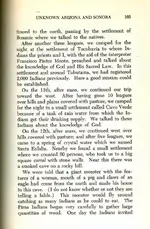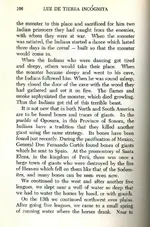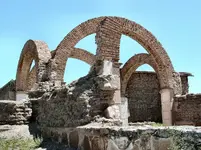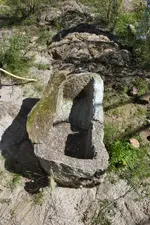Ellie Baba said:Hi to All,
Well Beth, looks like the infinity symbol, analemma and the number 8 all have different meanings.
Infinity (symbolically represented by ∞) is a concept in many fields that refers to a quantity without bound or end. People have developed various ideas throughout history about the nature of infinity. The word comes from the Latin infinitas or "unboundedness."
The infinity symbol is sometimes called the lemniscate, from the Latin lemniscus, meaning "ribbon". John Wallis is credited with introducing the symbol in 1655 in his De sectionibus conicis. One conjecture about why he chose this symbol is that he derived it from a Roman numeral for 1000 that was in turn derived from the Etruscan numeral for 1000, which looked somewhat like CIƆ and was sometimes used to mean "many." Another conjecture is that he derived it from the Greek letter ω (omega), the last letter in the Greek alphabet. Also, before typesetting machines were invented, ∞ was easily made in printing by typesetting an 8 type on its side.
On Earth, the analemma appears as a figure eight. Again, the resulting curve resembles a figure of eight (8). This sign and its components can indicate where the sun is located in the sky any time of year.
Below is a description of some of the terms that I have become familiar with over the years;
SARA; sculptured, animated rock art
Viewing corridor; area/location pre-determined by the Author of the SARA where one must be standing to view the complete art form and recognize the features of said art form during 100% phase.
Phase; Percentage of art form, 0% phase, there are no recognizable features, up to (100% phase) to completely recognizing the features of the art form 100%.
Phase dependency; Location of the sun or moon in relationship to a SARA at a given time, date and year. We need to use an analemma to determine where the position of the sun is actually located in reference to each SARA.
Eight (8), equals rebirth according to the study of Pyramidology. It can be used to represent any of the above, trust me, I have learned the hard way.
When one is working with the stone maps a common rule must be applied; each symbol may imply three different definitions. Each one must be proven individually to determine if its meaning can be applied to the maps. The sign may have more than three (3) meanings, let us use the hearts found on the stone maps. How many are there all together? Three, six, eight or nine?
The Priest Map tells us to study the heart, singular, not plural. Which heart are we supposed to study? It is so obvious, the correct one, the right one, the only one that can enlighten us to indicate where the treasures are cached. We must eliminate all of the others (or do we) to determine which heart we must study, look for or find. Busca, another word with a number of meanings; search, quest; hunt; v. search for, seek, look for; scout for; forage; call for, ask for, etc. BUSCA EL CORAZON = looking for the heart. You must find the heart, you must study this heart that you have found and you must know its meaning (hint; Padre Kino knew). This will be explained at a later date, for he had a great amount of knowledge relating to the area in question.
Lamar,
The symbol for the heart has been around since the 1190s. Pic attached

Joe,
No public info as of yet.
Ellie B
Hello Ellie Baba
If the author of the SARA where nature? would it be called NARA? Natural Anamated Rock Art! We've all seen them!
Thanks.
FEMF



![Picture 065 [Desktop Resolution].webp](/data/attachments/319/319878-0a59a2195ab9502978955c948376f341.jpg?hash=oPSrS6gxMY)
![Picture 065 [Desktop Resolution].webp](/data/attachments/319/319887-0a59a2195ab9502978955c948376f341.jpg?hash=oPSrS6gxMY)
![IMG_6135 [Desktop Resolution].webp](/data/attachments/410/410601-b369c1ceb21e772d0e743e995066423a.jpg?hash=LeygPt57zU)
![11 [Desktop Resolution].webp](/data/attachments/315/315075-fdbfec117e799ea518f9a6857f4b5d01.jpg?hash=SyV3DgEPeu)
![11 [Desktop Resolution].webp](/data/attachments/315/315087-fdbfec117e799ea518f9a6857f4b5d01.jpg?hash=SyV3DgEPeu)



![Rose Interpretation 2 [Desktop Resolution].webp](/data/attachments/407/407502-b972f8a57d810f6d929ef6db344bebc4.jpg?hash=NdEb7HTpJd)
![Rose Interpretation 2 [Desktop Resolution].webp](/data/attachments/407/407508-b972f8a57d810f6d929ef6db344bebc4.jpg?hash=NdEb7HTpJd)
